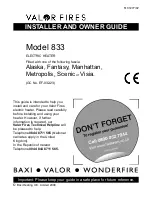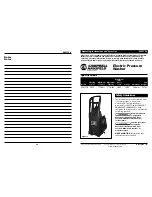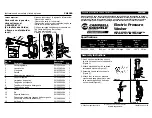
7
Additional tips:
1. If the content is put directly into the pressure ham cooker container, we get rid of excess fat and galantine.
In such a case, it is necessary to pour hot water on the pressure ham cooker container when removing the
content, which will make it easier to remove the spring with the food bound to the plate.
2. The pressure ham cooker content can be additionally placed in a dedicated bag, which facilitates removing
it from the pressure ham cooker and helps keep galantine within the food prepared.
3. The content can be wrapped in a dedicated casing with seasoning, which will provide our dish not only with
a richer flavour, but also with elegant appearance.
4. In order for the processed meat to turn out aromatic and with a distinct flavour, it can be cured
– either dry
or wet. You can also add your favourite seasonings to meat, mix everything, put it into a pressure ham
cook
er, and leave it in a refrigerator for a few hours in order to for it to “gain flavour”. Everything depends on
what you prefer and expect!
What is very important during preparation of meat products in a pressure ham cooker is the water temperature during
scalding and the temperature inside the meat content. Thanks to having control over it, we will always receive juicy
and nutritious products.
MEAT PRODUCT TYPE
TEMPERATURE OF THE MEAT
INSIDE [°C]
WATER TEMPERATURE [°C]
PORK
Ham
68
75-80
Loin
62-63
65-75
Neck
70-72
80-85
Shoulder
68-70
75-85
Bacon
72-73
80-85
Fatback
65-72
75-80
LUNCHEON MEAT
68-70
75-80
BEEF
68-70
75-80
POULTRY
72
75-85
The above table features scalding temperatures for different meat type
– the lower range should be chosen by those
who prefer their meat juicier, while the upper is for those who prefer it drier. In case of fatback the situation is quite
different
– it will be crunchier when scalded in a lower temperature, and more buttery in a higher one.
Utility model protected in the Patent Office of the Republic of Poland, No. EP2745757A1.
CLEANING AND MAINTENANCE
Stainless steel is resistant to corrosion thanks to the fact that the alloy elements form a thin, transparent protective
layer on its surface. It is extremely thin but provides excellent protection of the steel surface against corrosion. If it is
damaged mechanically and not maintained properly, pitting may appear on it. Depending on the frequency and
conditions in which a given stainless steel item is used, proper maintenance and cleaning are required.
The product is dishwasher safe.
During maintenance we recommend complying with the following:
1. When cleaning stainless steel:
never you strongly abrasive materials or steel wool.
never use inorganic acids (especially hydrochloric acid or bleaches) or bleaches containing sodium
hypochlorite for cleaning, as they may cause surface discolorations and corrosion pitting corrosion.
never let stainless steel contract non-alloy steel (particles of such steel types will undergo accelerated
corrosion on the stainless steel surface).
We recommend the following in order to take good care of our product:
2. Routine cleaning:
solid dirt and contaminations should be rinse with clean water, followed by wiping the surfaces with a soft
cloth.
for more severe staining - mild soap or detergent (cleaning ammonia, baking soda, vinegar, citric acid) and
a soft nylon brush.
rinse well after cleaning.
clean all the parts at least once a year (and more often within seaside areas and industrial areas).
3. Maintenance of stainless steel in the event of appearance of:








































